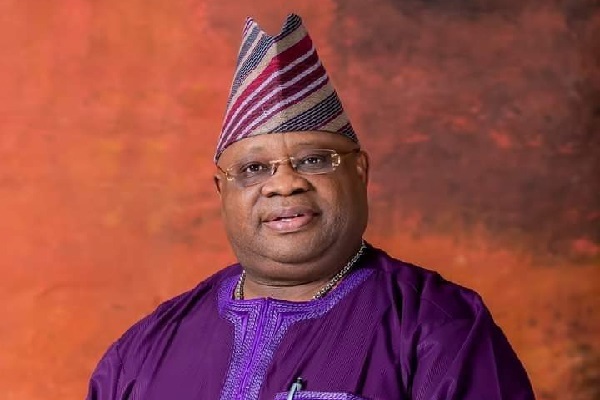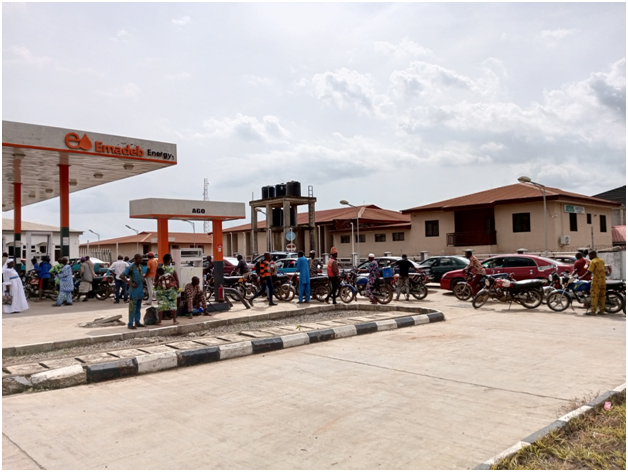Nigerian tertiary institutions and funding
By Babatunde Ayedoju
|
Nigeria, aside being reputed to be the giant of Africa, is one of the leading suppliers of crude oil, not only in Africa but in the world at large. Following the oil boom of the 1970s, Nigeria’s economy has been largely dependent on crude oil earnings. According to the Extractive Industries Transparency Initiative (EITI), Nigeria’s oil and gas sector represents about 65 percent of government revenue. The EITI further revealed that the total revenue flow to the federation, other tiers of government and sub-national entities from all sources (including crude oil sales, taxes, royalties and other incomes) came to USD 32.6 billion in 2018.
Similarly, a document on crude oil and condensate production for 2021, obtained from the Nigerian Upstream Petroleum Regulatory Commission and published on January 5, 2022 showed that the Federal Government earned N12.4 trillion from crude oil sales within the review period.
The facts above position Nigeria as one of the so-called oil rich nations. Unfortunately, that wealth seems not to have rubbed off on Nigeria’s educational sector, especially tertiary education. Nigeria is a country that boasts of many tertiary educational institutions. According to the National Universities Commission, Nigeria has 49 federal, 57 state and 99 private universities. Information gotten from the website of National Board for Technical Education shows that Nigeria has 37 federal, 51 state and 69 private polytechnics. The National Commission for Colleges of Education has 205 Colleges of Education on its website. That includes federal and state colleges of education, among others.
In summary, Nigeria has over 560 tertiary institutions and more are still coming, because the National Assembly reportedly has 126 bills for the establishment of universities, 140 for specialised colleges and 27 for polytechnics. If truly money is the wheel of evangelism, as the saying goes, then, funding is germane for all these institutions and the ones that are still coming, that is if they see the light of the day.
Unfortunately, experience so far does not show any hope in that regard.
According to a national daily, towards the end of last year, the Federal Government currently allocates between five and seven percent of the total budget to education, as against the recommended United Nations standard of at least 27 per cent of annual budget of a nation to education.
According to Premium Times, in the 2020 federal government budget, the allocation for tertiary institutions was N428 billion. A vast portion of this fund, N408 billion was for recurrent expenditure (salaries and overhead expenses) of the schools. Only about N20.6 billion was for capital projects in all the federal tertiary institutions.
To augment the allocation to capital component and research, the government created other sources of funding for all public institutions in Nigeria. These include the Tertiary Education Trust Fund (TETFund), the Petroleum Trust Fund, the NEEDS assessment, Internally Generated Revenue (IGR) and other intervention funds like Niger Delta Development Commission (NDDC).
The online source added that even with the interventions, funding remains a major problem for the institutions. TETFUND in 2020 budgeted N120 billion for 266 state and federal tertiary institutions. TETFUND is also the main source of funding for research.
The NEEDS assessment report found that 84.6 per cent of the intervention projects by the NDDC are abandoned, while almost all the state-owned universities depend entirely on TETFUND for capital projects. Despite these fiscal constraints, state governments continue to establish universities.
The federal government and the Academic Staff Union of Universities (ASUU) reached what is now popularly referred to as the 2009 agreement on the revitalisation of the institutions.
Under the agreement, the government would, among others, pump N1.5 trillion into the universities within three years, work towards committing 26 per cent of annual budgets to education and make education funding a first-line charge.
Thirteen years after the agreement, industrial actions by ASUU remain perennial. In 2010, members of the union went on strike for six months – from July 2010 to January 2011. From December 2011, they were on another strike for 59 days. Again, the universities were shut for five months from July to December 2013 and from November 2018 to February 2019.
The government made some concessions to the university teachers shortly before the 2019 general elections. But before that, there was a short strike by the union in 2017 and then another one for nine months in 2020.
Currently, the university lecturers are on another industrial action that started some weeks ago. Frequent strikes by tertiary institution unions have had untold effects on parents, students and the institutions themselves. Unfortunately, the end does not seem to be in sight.
Considering the fact that the frequent downing of academic tools is blamed on poor funding of institutions, among other factors, the question that begs for an answer is, what is the way forward with respect to funding or higher institutions?
Speaking with The Hope, Chief Femi Aluko, a one-time Commissioner for Education in Ondo State stated that funding of higher institutions is the responsibility of the government, according to the Constitution. According to the elder statesman, failure to do that is what has led to the deterioration of the educational sector and the setbacks caused by frequent strikes.
Also speaking, Professor Simon Ehiabhi from the Department of History and International Relations, Adekunle Ajasin University, Akungba-Akoko said, “It’s all about interest. People at the helms of affairs do not fund education well enough because they are under the influence of some external powers who do not want the populace to be educated. They know that the more educated the people are, the more vibrant and self-assertive they will be. There is no other excuse because we have the resources. We have everything needed to fund education at all levels.”
Talking about possible alternative sources of funding for higher institutions, Professor Ehiabhi said, “That is where we are missing it in Nigeria. Institutions are not created as business ventures. Our function is to research, teach and impact the community with the result of the research. Government should fund the system. Aside the government, private agencies, corporate bodies and endowments can sponsor research in universities. Businesses can collaborate with researchers on campuses to fund research. That is another source of funding. Alumni can also have endowments.
However, if institutions will have to increase their fees under the guise of Internally Generated Revenue, it will deprive indigent students of access to education. Every university thrives on endowments, government and corporate body patronage, but when government does not fund schools it established, corporate bodies will not be interested in such institutions.”










